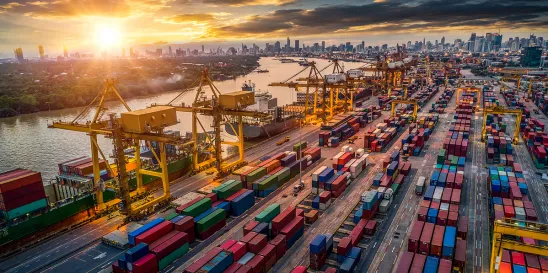Export controls are the manifestation of foreign, economic, and national security policy, and the implementation of policy requires dynamic adjustment, a back-and-forth, a balance. So, on December 7, 2023[1], amid the tightening of new semiconductor regulations, BIS announced it was relaxing regulations around another set of exports. This drawing back of the controls arrives in the form of a set of three rules easing license requirements and expanding license exceptions. While seemingly disparate, each of the three areas of amendments represents a consistent push to align U.S. export policy with those of its allies and trade partners, as well as to reward those allies with (slightly) less burdensome controls.
The first rule changes licensing requirements related to Australia Group-controlled pathogens and toxins and crime control licenses. The second rule expands license exceptions for missile technology items. And the third is a proposed rule requesting comment on how to encourage more usage of the License Exception Strategic Trade Authorization (STA). Taken as a whole, these changes are a part of a broader effort to relax licenses and controls for U.S.-friendly countries.
Rule 1: Less License Requirements for Pathogens and Crime Control
What It Says: This rule (1) revises the licensing requirements for Chemical and Biological Nonproliferation to certain pathogens and toxins for Australia Group Countries and (2) revises the licensing requirements for certain Crime Control (CC) goods to seven key allies[2] in the Global Export Control Coalition (GECC).
What It Means: In amending controls, BIS recognizes that Australia Group Countries[3] have implemented effective export control for dual-use biological items. The Commerce Control List items affected are pathogens and toxins, genetically modified material based on these pathogens, and related technology—all of which may now be exported without a license. This takes over 1,000 yearly license applications off of BIS’s docket (which is great for the rest of us with applications in the queue!).
In addition, seven countries have been removed from the CC:1 and CC:3 columns of the Country Control List and these items will no longer require a license. These controlled items run the gamut from shotguns to fingerprinting equipment, but generally, they cover equipment you would expect to be used by law enforcement. These changes were made because of these countries’ commitments to human rights protection, particularly in support of Ukraine after the Russian invasion, illustrating the point that alignment with U.S. policy goals earns tangible rewards for U.S. allies. These amendments will remove around 200 licenses from BIS’s docket.
Rule 2: More License Exceptions – Missiles
What It Says: Countries in that are in both Country Group A:2 and the Global Export Control Coalition will now benefit from licenses exceptions related the certain missile technology items.
What It Means: Most changes in this new rule are to align the Commerce Control List with the Missile Technology Control Regime (MTCR).[4] Embedded, though, are expansions to numerous license exceptions for MT-controlled items. The biggest benefit will be felt for companies that export civil manned aircraft parts, which may be a significant relief as any items or technology entangled in the MTCR become extremely difficult to work on or with across borders. These exception expansions open trade for certain dual-use parts, such as propulsion systems.
Rule 3: Proposed Rule for STA Expansion
What It Says: This proposed rule seeks comment on how to push more exporters to use the License Exception STA.
What It Means: Essentially what BIS is doing here is trying to pinpoint bottlenecks for companies wanting to benefit from the License Exception STA. They want to hear why there is “apparent reluctance” for exporters to rely on this exception . . .
Wait, what?! We have participated in enough compliance conferences where BIS representatives have (clearly and patiently) explained STA and its benefits. The resounding response on this apparent reluctance is the complexity of the STA rule and uncertainty on the details of applying it! Companies would definitely prefer not to go through a license application, but they don’t want to put themselves at risk by misunderstanding or misusing STA. We will go ahead and interpret this BIS request for a “why” as a request for “how” the agency might make the STA more accessible and welcoming, particularly to small or medium-sized companies.
In any case, the request to work with industry on how the STA could be more accessible (and, it would follow, more accessed) is definitely a step in the right direction!
As many of you may know, the STA Exception permits certain exports to trusted U.S. allies if the importer receiving the export certifies they will not reexport the good to certain STA countries. The proposed rule makes it clear that it may be used for deemed exports and that it is not a list-based exception. The proposed rule also includes a table which explains the benefits of the STA Exception over a traditional license; notably, this includes no limitation on the quantity or dollar amount and—perhaps, obviously—not having to wait for BIS to grant a license. [5]
The Rules as a Whole
BIS has a message that is as true now as ever: Aligning with U.S. foreign policy is simply good for business. In stark contrast to the restrictions on semiconductors to China, these latest changes show how the U.S. will give “favorable treatment” to allies and countries who have equivalent export regimes and share foreign policy objectives. As BIS closes one door, it opens another.
If you find yourself in a highly regulated industry, you may well continue to see more access to the marketplace of key allies and partners. Likewise, BIS has used these regulations to free up resources, so you can expect increased scrutiny of exports to high-risk countries.
If anything, these rules show that the gates of trade are ever shifting, and diligence is the only way to stay on top of these. Just as one set of rules could create more export burden for a company and its compliance program, another set of rules creates more opportunity to be seized. Keeping abreast of these changes can prevent exposure and identify areas of expansion for highly regulated companies.
We recognize that staying on top of these changes means a slog through hundreds of pages of regulation, which is why we are committed to continuing to provide updates in this blog.
FOOTNOTES
[1] Effective December 8, 2023.
[2] Austria, Finland, Ireland, Liechtenstein, South Korea, Sweden, and Switzerland
[3] For a complete list of Australia Group member countries, see here.
[4] The MTCR is an export control arrangement among thirty-five countries which establishes a common list of controlled items and policy around those items for member countries.
[5] The average time for one of these is an agonizing 40 days.




 />i
/>i
